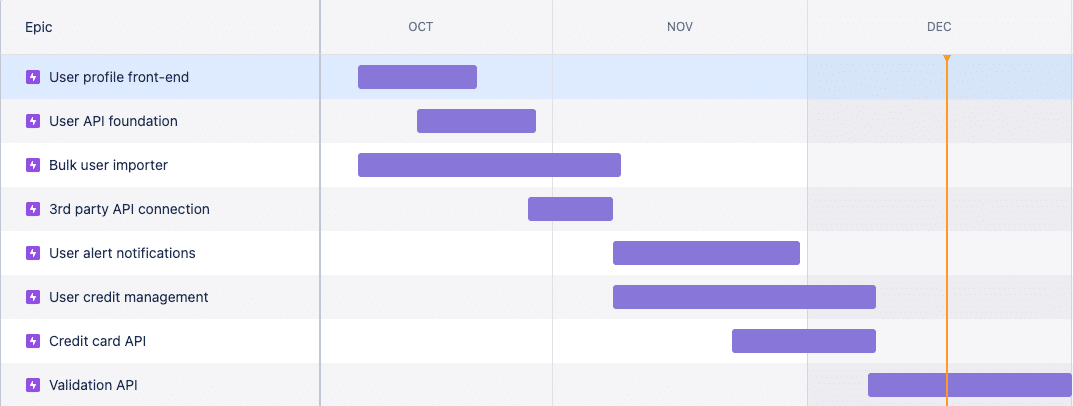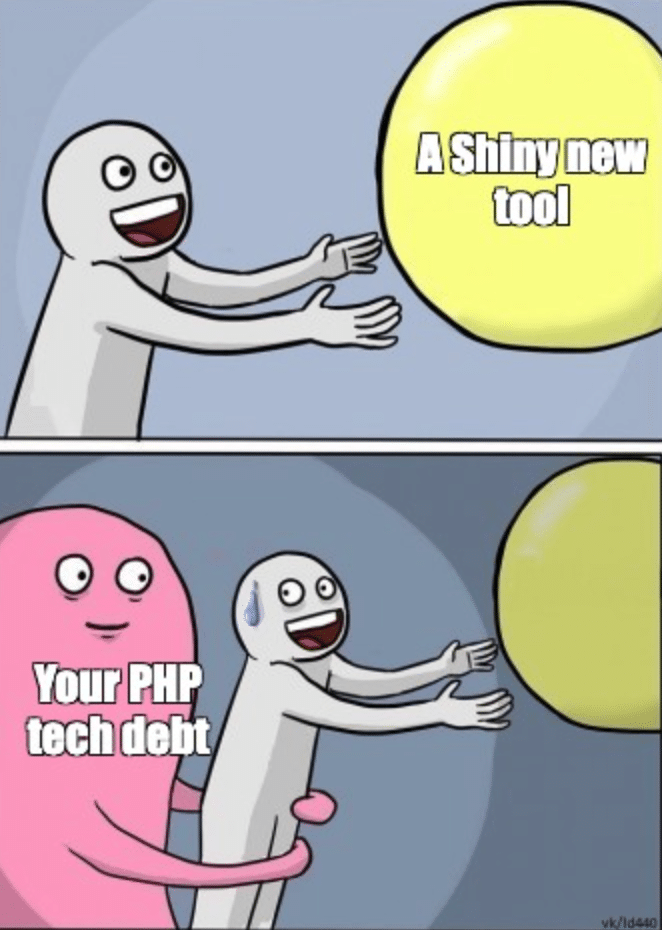
Agile project management: A real world guide for digital publishers
Agile project management.
Just hearing the phrase conjures up images of fast-paced, achiever-types, smashing goals and being hyper-efficient.
Surely we all want to be Agile?
You’d think so. Yet, as some unfortunate Agile victims have discovered, without proper execution, it’s possible to find yourself in a never-ending project with cost blow-outs that far exceed your intended budget.
As a technical agency that’s seen the good, bad and ugly of Agile, we know that it works-but we also know where it can go wrong. That’s why we want to demystify Agile working and show you the best way to make your next tech project a success.
So let’s start at the very beginning.
What is Agile project management?
Most Agile processes are based on the 2001 Agile Manifesto created by a team of software engineers who were increasingly frustrated by the traditional process of software development. They felt that developers were getting lost in the weeds of planning and documentation, and forgetting what really matters: The user.
The Agile methodology puts people before processes, and views experimentation and continuous improvement as the keys to developing a superior product.
So now you understand the theory of Agile working. How does it work in practice, on a real-life media website build? And what do you need to consider before you start work?
Be prepared to work iteratively
A common misconception about building a digital publishing site is that you can brief an agency and let them get on with it. Not true.
If you want technology that works, build it in bite-sized chunks then review and test as you go. This ensures you can move with the market (it’s called Agile for a reason) and you aren’t left with a product that’s outdated before it’s even launched.
The iterative approach does mean you can’t ‘set and forget’. However, it also means that because every feature is reviewed in real-time, you’re not faced with any nasty (or costly) surprises three months into the project.
We’ve built and replatformed enough digital publishing sites to know that iterative development works. And the reason why each of these businesses achieved such transformational results is because those businesses participated in the project.Every step of the way.
But participating in a project is different to being overwhelmed by a project. If you’re properly prepared, iterative development will save you time, money and mistakes.
READ MORE: A developer’s guide to iterative web builds
What’s the alternative to Agile working?
If Agile is all about working iteratively using a circular process, the alternative way to work is using a linear process. This is commonly referred to as Waterfall project management.
Waterfall project management fell out of favour as Agile gained popularity. In fact, in some tech circles, admitting to working Waterfall is tantamount to saying you’re still using Internet Explorer. On the surface, Waterfall is dead. But if you scratch that surface, you’ll discover that most agencies claiming to be Agile usually end up falling back into old school Waterfall techniques. It happens so often that there’s even a name for it: AgileFall.
To be fair, there’s nothing inherently wrong with Waterfall. It’s a straightforward, easy to follow process that offers the (apparent) clarity and visibility that some clients crave. But don’t be lulled into a false sense of security. There’s nothing safe about setting your project plan in stone. And for large, complex publishing sites, Waterfall brings many risks
The infamous $840m failed launch of the 2014 Obamacare website healthcare.gov, was largely due to Waterfall project management. If the tech team had chosen to work iteratively, each feature would have been tested as it was developed. Instead, they waited for a ‘big reveal’ which went spectacularly wrong.
Why do publishers fear Agile?
With pure Agile there are a lot of uncertainties, and for many media operators, it all sounds too vague and open-ended for them to take the risk.
Publishers often come to us in a state of crisis. They’re in way too deep with a tech issue, and in some cases their website (i.e. their entire business) has actually crashed. It’s rarely an unexpected crisis. People are usually aware that their website isn’t performing, long before it finally dies, but the fear of entering into a project management nightmare prevents them from starting the necessary work.
Publisher paralysis is so ubiquitous that we wrote an entire article about the fears that sabotage your publishing business.
Don’t make this mistake. Procrastination is far more dangerous to your business than embarking on a well managed project to future-proof your publishing platform.
How to overcome Agile challenges
When it comes to working iteratively, there are two types of challenges: general inconveniences and massive headaches.
The massive Agile headaches
These are the Agile issues that literally grind your project to a halt. The most common reason for Massive Headaches is a misalignment between developer and design agency. There’s nothing more frustrating (or costly) than having a team of devs resourced and ready to go, and then discovering the designs are nowhere near finished.
That’s why it’s so important to align your development and design teams at the start of the project (see Easy Agile Wins below).
The general Agile inconveniences
These usually occur as clients adjust from working in a linear, Waterfall style to a more involved, iterative style. For example, in an Agile project, tasks or cards are created throughout the project and discussed with the dev team on a sprint to sprint basis. This is unavoidable. As the project evolves, new ideas and tasks will inevitably arise. It’s impossible to know everything right at the beginning. However, if you’ve successfully aligned your design and development teams, misunderstandings and curveballs will be far less likely. Most major changes happen early in the project, so as long as you’re communicating well during stand ups and showcases, creating cards should never become a major time commitment.
Clients are often worried that being Agile means they’ll lose project visibility. That’s not the case at all. While you can’t use traditional Gantt charts, every part of the project still has goals and deliverables, so you can still use charts.
Here’s an example of a simple progress chart we use to keep clients informed.

Agile development for the real world of publishing
Lots of businesses claim to be Agile. It only takes a quick search to find the word scattered across agencies’ credential pages. Yet few have truly mastered the art of building technology that:
a. works
b. is affordable
c. has an end date.
We like to think we’ve taken the best bits of Agile and modified them for the real world of publishing. A world where clients need their projects to finish (and finish on time), where costs are realistically managed and where nobody gets distracted by flashing lights and useless gadgets.

The benefit of managing projects this way is that we’re not stuck to old ideas. We can adapt and produce a better product for publishers as we go. Whenever we learn something new that we were unaware of at the beginning of the project, it’s not a huge deal. That’s because we enter every project knowing that we’ll discover something new and that the project will evolve.
A Unique Agile Approach
No two clients fit into the same mould, so we adapt the Agile process for every project. The fundamentals and guiding principles are always the same. However, just as we create a bespoke website based on a client’s unique business needs (and why we’re not a fan of templated SaaS publishing platforms like Substack and Medium), we also create a bespoke Agile process that is practical for the client’s work schedule and commitments.
For instance, we don’t approach every project in full scrum. Is it realistic to demand the same client involvement for a $50,000 project with two team members as we would for a $300,000 project with a dedicated project team? This is rarely necessary, usually over complicates things, and adds little value to the end result.
How to future-proof your publishing project
The best developers don’t simply create whatever their clients want. That’s mostly because clients don’t often know what they want. They just know that they have a problem. One of the biggest advantages of having an agency partner is being able to share your business challenge and then hearing the helicopter view of a specialist team that isn’t part of your company ecosystem.
“We’re not a team of tech minds, we’re a group of marketers. The Code Company did a great job of holding our hands, walking us through the process and helping us make sense of the all the tech elements. We really built a relationship and never felt like we were just a client”
Brandy Yarema – Sr. Manager Marketing & Communications, eBay Ads
The Code Company aren’t just tech geeks, we’re strategists with vast experience in online publishing and an obsession with finding the best possible solution to the most perplexing of digital challenges.
Just because a tech feature might tick an internal box doesn’t mean that it will ever appeal to a reader. It’s important to work with an agency that understands the publishing industry and the huge sector transformation that’s occurring right now. We follow industry trends and continually educate clients about future developments and potential considerations.
Easy Agile Wins
After more than fifty Agile publishing projects, we’ve learned a few tips to set you up for success.
Review your existing website
In order to get what you want from your publishing project, it’s important to know what you don’t want. Before starting any new web development project be sure to audit your existing website. Make a note of what works and what is holding you back. You must be able to clearly articulate the website’s purpose and the results you want to achieve.
Align your design and development agencies
The secret to Agile success is effective collaboration between client, developer, and designer. That’s why it’s vital to establish your team early in the project and ensure everyone buys into the same way of working. Project goals, role expectations and approval/acceptance criteria need to be clearly established upfront. Information gaps and lack of clarity are some of the primary reasons for Agile processes stalling, so always start your project with a clear and detailed brief.
Prepare for change
How comfortable are you with change? If Covid taught us anything, it’s that nothing in life is certain or fixed. So changing scope isn’t a mark of failure, it’s a sign of reality. Agile gives you the flexibility to change your mind and priorities, while giving your agency the ability to adapt to those changes. No matter how well scoped out a project is, new ideas always come up. And that’s the sign of a healthy, innovative development.
Stay out of the weeds
When you’re in the midst of a project, it’s easy to lose sight of what you originally set out to achieve. Stay committed to the important components but don’t obsess over every detail along the way. We’ve seen publishers get so fixated with the minutiae of their web build that the entire project was derailed.
Use project management technology
Although they are often referred to as a top productivity killer, meetings are still a necessity in Agile project management. However, that doesn’t mean they should ever be long or painful. We’ve seen productive client meetings that finished in 10 minutes. Everyone got what they needed, roadblocks were cleared and the client was delighted. The secret to efficient meetings is having a clear agenda and ensuring that all attendees are prepared and know exactly why they’re there.
Ready to be Agile?
While every project has its challenges, working iteratively is the best way to minimize risks, maximize productivity and create a solution that’s both affordable and fit for purpose.
Just ensure you find a technical partner that truly understands the publishing industry and can put you and your unique business needs at the heart of the project.

